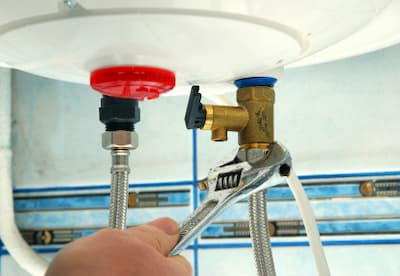Best Practices for Maintaining Your Home's Hot Water SystemEasy Ways to Maintain Your Home's Hot Water System Properly
Best Practices for Maintaining Your Home's Hot Water SystemEasy Ways to Maintain Your Home's Hot Water System Properly
Blog Article
The content underneath about Tips For Maintaining Your Hot Water Heater is fairly entertaining. Read it yourself and decide what you think of it.

Warm water is important for day-to-day comfort, whether it's for a rejuvenating shower or washing dishes. To ensure your warm water system runs efficiently and lasts much longer, routine upkeep is essential. This short article gives useful tips and insights on how to preserve your home's warm water system to avoid interruptions and pricey repairs.
Introduction
Keeping your home's warm water system might appear overwhelming, but with a few basic actions, you can ensure it operates efficiently for several years to come. This guide covers whatever from recognizing your hot water system to DIY maintenance suggestions and understanding when to employ specialist assistance.
Value of Preserving Your Warm Water System
Normal upkeep not only extends the life expectancy of your warm water system however likewise guarantees it runs effectively. Disregarding upkeep can lead to lowered performance, greater power costs, and even premature failure of the system.
Signs Your Hot Water System Requirements Maintenance
Knowing when your hot water system needs attention can avoid major problems. Watch out for indications such as irregular water temperature, strange sounds from the heating system, or rustic water.
Comprehending Your Hot Water System
Prior to diving into maintenance tasks, it's useful to understand the standard parts of your warm water system. Generally, this consists of the water heater itself, pipes, anode rods, and temperature controls.
Monthly Maintenance Tasks
Normal monthly checks can help catch small concerns prior to they rise.
Purging the Hot Water Heater
Purging your water heater removes sediment buildup, boosting performance and extending its life.
Checking and Replacing Anode Rods
Anode poles stop rust inside the storage tank. Examining and replacing them when broken is vital.
Examining and Readjusting Temperature Settings
Readjusting the temperature level settings makes certain ideal efficiency and security.
DIY Tips for Maintenance
You can execute a number of maintenance jobs yourself to maintain your hot water system in leading condition.
Looking for Leaks
Consistently inspect pipelines and connections for leakages, as these can lead to water damages and higher expenses.
Testing Stress Alleviation Valves
Examining the pressure safety valve ensures it operates correctly and protects against excessive stress accumulation.
Shielding Pipes
Protecting warm water pipes decreases heat loss and can save power.
When to Call a Specialist
While DIY upkeep is valuable, some concerns require specialist competence.
Complex Problems Calling For Professional Assistance
Examples include significant leaks, electrical issues, or if your hot water heater is constantly underperforming.
Regular Professional Maintenance Perks
Expert upkeep can consist of comprehensive evaluations, tune-ups, and making sure conformity with safety and security criteria.
Conclusion
Regular maintenance of your home's hot water system is vital for performance, long life, and cost savings. By complying with these pointers and recognizing when to seek professional assistance, you can make sure a reliable supply of hot water without unanticipated disruptions.
How to Maintain an Instant Hot Water Heater
Before tinkering with your hot water heater, make sure that it’s not powered on. You also have to turn off the main circuit breaker and shut off the main gas line to prevent accidents. Also turn off the water valves connected to your unit to prevent water from flowing into and out of the appliance. 2. When you’re done, you have to detach the purge valves’ caps. These look like the letter “T” and are situated on either side of the water valves. Doing so will release any pressure that has accumulated inside the valves while at the same time avoid hot water from shooting out and burning your skin. 3. When the purge valves’ caps are removed, you have to connect your hosing lines to the valves. Your unit should have come with three hoses but if it didn’t, you can purchase these things from any hardware or home repair shops. You can also get them from retail stores that sell water heating systems. Read the user’s manual and follow it to complete this task properly. When the hosing lines are connected, open the purge port’s valves. 4. You should never use harsh chemical cleaners or solutions when cleaning your unit. Make use of white vinegar instead. It should be undiluted and you’ll probably use about 2 gallons. 5. Now flush your water heater. This task should probably take about 40 minutes. We can’t give you specific directions for this because the procedure is carried out depending on the type, model and brand of your heater. With that being said, refer to the user’s manual. 6. When you’re done draining the unit, you have to turn off the purge port valves again. Remove the hosing lines that you earlier installed on each of the water valves. Put the valve caps (purge port) back in their respective places and be very careful so as not to damage the rubber discs that are found inside these caps. 7. Now that everything’s back in place, check your user’s manual again to find out how to reactivate your water heating system. 8. Once it is working, turn one of your hot water faucets on just to let air pass through the heater’s water supply pipes. Leave the tap on until water flows smoothly out of it. https://www.orrplumbing.com/blog/2014/september/how-to-maintain-an-instant-hot-water-heater/

As a person who reads about How to Maintain a Hot Water Heater in a Few Simple Steps, I was thinking sharing that piece of content was beneficial. Are you aware of somebody who is in to the subject? Be sure share it. Thanks a bunch for your time. Come back soon.
Source This Article Report this page